MARIANO TOMATISWONDER INJECTORWriter of science with the
|
Rennes-le-Château, an open work 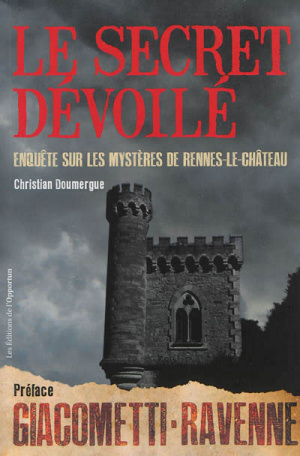 Like the old saying goes, we should not trust two kinds of people: those with mustaches and those without. Classifying human beings into two categories is a temptation hard to resist. It requires a minimum intellectual commitment, and obviates the need to deal with the nuances. Many narrators exploit the mechanism to catch our attention: the most classic twist involves the “good” guy of the story, which suddenly reveals the attitude of the “bad” one (or vice versa). When layers are confused and ambivalent characters sketched, the stories irresistibly attract us: it is easier to identify ourselves with liminal characters, knowing that we are the first ones not to be easily classifiable. Gross categories are useful for judging something at first glance, but do not hold up for further analysis. The stories that revolve around the treasure of Rennes-le-Château evoke interesting thoughts on the subject. Arsonists and firemen In Italy we would coarsely divide the scholars who deal with the enigma of Rennes-le-Château into the proverbial types of “arsonists” and “firemen”. The first reconstruct the events occurred in the French village highlighting their weirdest implications: at the end of the 19th century, a priest became rich thanks to the discovery of “something” — a monetary treasure? a disturbing secret? an alchemical key? The second dismantle every fairy tale in a systematic way, reducing everything to a trivial story of simony. The playing field on which they confront each other is the same, but while the former grant themselves many degrees of freedom, the latter lead studies following strict rules — that the former would maliciously label as “castrating”. On both sides of the violent battle going on since the Sixties, rarely the two factions find points of agreement. The best known among the “arsonists” still in business is the English writer Henry Lincoln. On the other side, the fiercest opponent is his compatriot Paul Smith. Those who have eyes to see, can glimpse on the sidelines figures defying categorization. One of the most interesting is a young Frenchman from Montpellier: Christian Doumergue. Christian Doumergue and that lunch in Rennes-les-Bains 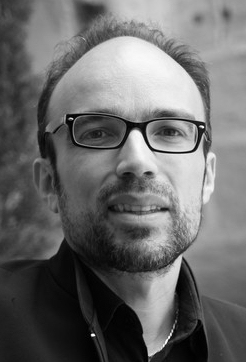 I met Christian “virtually” ten years ago, through the pages of his book Berenger Sauniere — prêtre libre à Rennes-le-Château (1852-1917). (1) Published when he was only 24 years old, it is an impressive reconstruction — for the quality and quantity of references — of the story of the billionaire priest and his life in the village of mysteries. Having direct access to most of the documents cited, Christian offered the reader a critical review that was invaluable to me when I tried to pursue the same road to the benefit of readers Italian (which resulted in my historical and archeological guide to the village of Rennes-le-Château, fully available online). In 2008, we worked closely together to build the new museum of Rennes-le-Château, and the team activities allowed me to appreciate his sympathy and generosity that transcend his skills as a scholar and historian. When in 2011 many newspapers (also in Italy) announced the discovery of a treasure cave in the area, I run there and it was Christian to accompany me on the spot, leading me on the threshold of a ravine which, alone, I could have never found (here my report of our excursion). During the lunch in Rennes-les-Bains that preceded the expedition, we compared the respective points of view, and it was an opportunity to share with him the two cornerstones of my investigations: the idea that Rennes-le-Château is at the core of an Infinite Game (in the meaning of James Carse) and that the whole mythology condensed around the village is having a “measurable” effect on some people “immersed” in it, despite being made up of immaterial information. (2) The last reflection emerged from my studies about stage magic. A good magician should be able to induce — through stories and appropriate stimuli — weird magical experiences, in which reality and illusion blur. Collecting comments from the visitors of the church of Rennes-le-Château, I have read incredible descriptions of what happens in that building — at least in their perception. The secret revealed 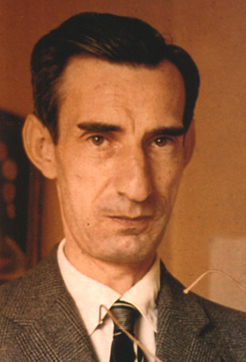 Christian has just published a monumental essay (over 600 pages!) in French, entitled Le secret dévoilé — Enquête sur les mystères de Rennes-le-Château (“The Secret Revealed — Investigation on the Mysteries of Rennes-le-Château”). Reading it, I was surprised by the breadth and depth of analysis. Inspired by the ideas that emerged during our conversation, Christian has ripened them, supporting the scenario with solid arguments and systematizing its huge scope. If in his previous book he had retraced the events of the priest of the mystery — documenting what was solid in the history of Rennes-le-Château — in this book he goes further. Starting from the huge mythology developed from the Sixties to our days — made of hypoteses, apocryphal writings, false documents and bizarre characters — Christian raises the key question: how is it born? With the aim to trace its origins, the author gives birth to a rich compendium identifying — in a systematic way — the myriad of sources and inspirations that gave rise to what we now know as the “myth of Rennes-le-Château”. Never before has this goal been targeted (and reached) with so much determination and discipline. The Man Behind the Curtain Christian identifies in the figure of Pierre Plantard the cornerstone of the entire mythological corpus, and — starting from his biography — he meticulously retraces his story over four decades: from the first contacts with the astrologer Geneviève Zaepfell (who deeply influenced his symbolic imagery) to the collaboration with the surrealist author Gérard de Sède, through the troubled definition of a personal spirituality that mixed thoughts and ideas from Paul Le Cour, Alexandre Saint-Yves d’Alveydre and Jean Cocteau. The way in which Christian conducts the analysis, prevents to easily classify him as a fireman or an arsonist. When he openly labels as “fake” many of the documents artfully created by Plantard, he behaves like the most severe fireman. When, however, he deepens the analysis of the French esotericist’s intentions, he gets to hypoteses that may grant him the appellation of “arsonist”. Yet his assumptions are often so solid and reasonable that you can ignore them only at your own risk. If the majority of the scholars engaged themselves with four of the “five Ws” (“When”, “Where”, “hoW” and “What” happened in Rennes-le-Château?), in his book Christian moves further to the fifth fundamental question: why? Why did Pierre Plantard work so hard to create such a complex and long-lived mythology — that has survived to him and shows no signs of aging? The creation of a modern myth To define Plantard’s plans, the author rejects the term “mystification”. Not because it is wrong in itself, but because it is enough to take out a letter to get a useful neologism: “myt(h)ification.” Some chapters of the book are explicitly entitled “How to create a myth”, and Christian’s analysis proceeds following a series of definite steps; in these chapters, the style of the historical essay merges with the one of a practical manual: analyzing the way in which the myth has been created and sustained, the author draws general instructions that can be followed in completely different contexts. According to Christian, the creation of a myth unfolds in four phases: 1. Rewriting facts Deeply influenced by the aesthetics of Lost, the author makes frequent reference to the television series to describe the characters in the game. He defines Pierre Plantard as “The Man Behind the Curtain”, using the English expression which in Lost refers to Jacob, the character who — behind the scenes — manipulates the protagonists without their knowledge. 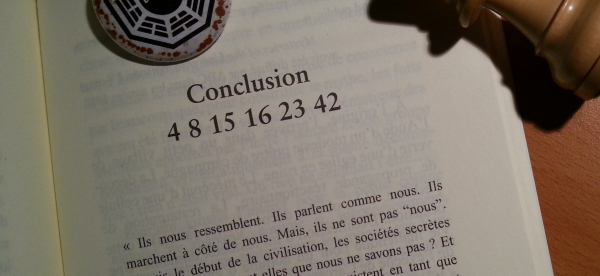 “The Numbers” hidden in plain view (page 619), one of the in-jokes for Lost’s aficionados. By following Plantard’s evolution through his many writings, he is able to retrace with care the cultural and spiritual growth that profoundly influenced the myth that he built. Like a jigsaw puzzle sorted out for the first time in a rigorous manner, the book involves the Kingdom of Agartha, the goddess Isis, the myth of Atlantis, Freemasonry and the New Age Movement. Christian realizes that the philological analysis must be supplemented by a narratological study: It is not enough to check the writings of Plantard by comparing them with consolidated historical data and draw conclusions; it is necessary to deal with them as you deal with a literary text, focusing on the way in which words and images are able to produce effects of meaning and wonder what they are. Changing the way you look at those writings may radically change the approach used so far to study them. A literary text can not be understood without putting it in perspective with those who preceded it, signed by the same author. In older texts, the author is less good at hiding his actual intentions than in his definitive and consolidated works, where his thoughts are more explicit than those expressed most recently in more symbolic form. Does this assumption also apply to the writings of Pierre Plantard related to Rennes-le-Château? (3) This assumption allows Christian to travel a way which is long and full of interesting revelations, enabling him to isolate the specific intentions of Plantard from the most extensive (and largely independent) story that took place in the village at the end of the 19th century. In wondering how words and images are able to produce effects in a reader, the author conducts a study that is at the very core of the psychology of stage magic, whose intention is to enchant the audience, designing mindblowing experiences through the construction of illusory alternative theatrical worlds. A very serious game According to Christian, Plantard long wondered how we could help raise the spiritual consciousness of an individual. The analysis of his writings allows him to reconstruct the answer he found, fueling his activities for decades: the trick is to place the existence of a person at the heart of a story of initiation in which the protagonist plays the role of the main hero. Without calling it in this way, the esotericist laid the foundations for a “game” that would have never come to an end, to which anyone could participate, feeling free to add something and to act as a protagonist. A very serious game, from his point of view, rich in deep spiritual implications: Building the myth of Rennes, Pierre Plantard created a maze through which lead at his will those who dared venture there. […] Writing a book about Rennes-le-Château would not be enough to produce such an effect. It was necessary to devise an open work, to which anyone could have added a new page. Laying the foundations for a story that had a central riddle unsolved forever, continually calling for a hero able to solve it. (4) 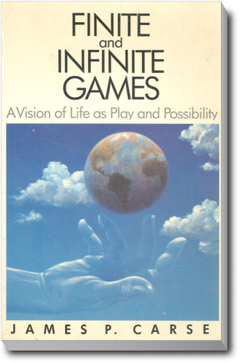 One of the first to be caught in the “game” was Henry Lincoln, and the choice of the term is not random. Commenting on my assumption about the Infinite Game, and reporting of our meeting in Rennes-les-Bains, Christian writes: The concept applies perfectly to the description of the mythology of Rennes. In his articles, Mariano shows the way in which it is continuously being fed by ever new “players” who bring with them new elements (characters, places, works of art) to clarify more and more the enigma. The size of the game increases when newcomers add their own theories and, from a certain point of view, do not cease to nourish the myth, making the enigma of Rennes-le-Château a sort of infinite story. The concept struck me as particularly innovative and seducing, not so much to solve the historical riddle in itself, but to understand the mechanisms that explain its powers of attraction and unbelievable longevity. Mariano had a profile that allowed him a different perspective on the universe of Rennes-le-Château: […] stage magic. His activity as a magician was also linked to non-trivial knowledge of psychology. […] Conditioning is an essential psychological element in the practice of conjuring. Magic mostly lies in the ability to push the viewer to see what the magician wants. The conversation I had with him that day raised exciting perspectives. It opened me to new dimensions of the myth developed by Plantard that explain without any doubt his strength. And re-reading for the umpteenth time “L’Or de Rennes” by Gerard de Sede, I found confirmation that the mechanism had been exploited intentionally. (5) It is easy to imagine the pleasure I felt in seeing how far Christian led the premises of our conversation, giving birth to a unprecedented study of Pierre Plantard’s intentions and methods. The first book ends on page 404. In the following 200 pages, Christian follows a different route. Made of a more rarefied material, and resting on weaker clues — but no less exciting. The author is convinced that in the region of Rennes, a secret is hidden; “something” that Plantard brought to light and revealed in a symbolic way through his writings. He presents the arguments as best he can, without forcing the few items available, and with the honesty of those who know the limits of their investigation. It is historically the most questionable section, that skims a rather incredible idea: the body of Mary Magdalene was buried somewhere around Rennes-le-Château. A concession to an irrational dream that the strictest firemen will not forgive. But that allowed Éric Giacometti to close his preface by confessing in a sound way the effect the book had on him: I’m dreaming again. But with my eyes open. (6) _________________ (1) Christian Doumergue, Bérenger Saunière — prêtre libre à Rennes-le-Château (1852-1917), Lacour-Ollé, Nîmes 2000. (2) It is the only personal thought I added to the museal panels in Rennes-le-Château: “As for my thoughts on the Rennes affair, I consider Rennes-le-Château to be a place that functions as a shaman’s tent: an archetypal site where people come to have visions and to invite profound experiences. The myths surrounding the region have contributed towards making Rennes-le-Château a place of great symbolic power. This proves the potent influence of literature and symbolism upon the human being.” (3) Christian Doumergue, Le secret dévoilé — Enquête sur les mystères de Rennes-le-Château, Les Éditions de l’Opportun, Paris 2013, p. 239. (4) Christian Doumergue, Le secret dévoilé — Enquête sur les mystères de Rennes-le-Château, Les Éditions de l’Opportun, Paris 2013, p. 382. (5) Christian Doumergue, Le secret dévoilé — Enquête sur les mystères de Rennes-le-Château, Les Éditions de l’Opportun, Paris 2013, pp. 388-390. (6) Éric Giacometti, prefazione a Christian Doumergue, Le secret dévoilé — Enquête sur les mystères de Rennes-le-Château, Les Éditions de l’Opportun, Paris 2013, p. 9. |